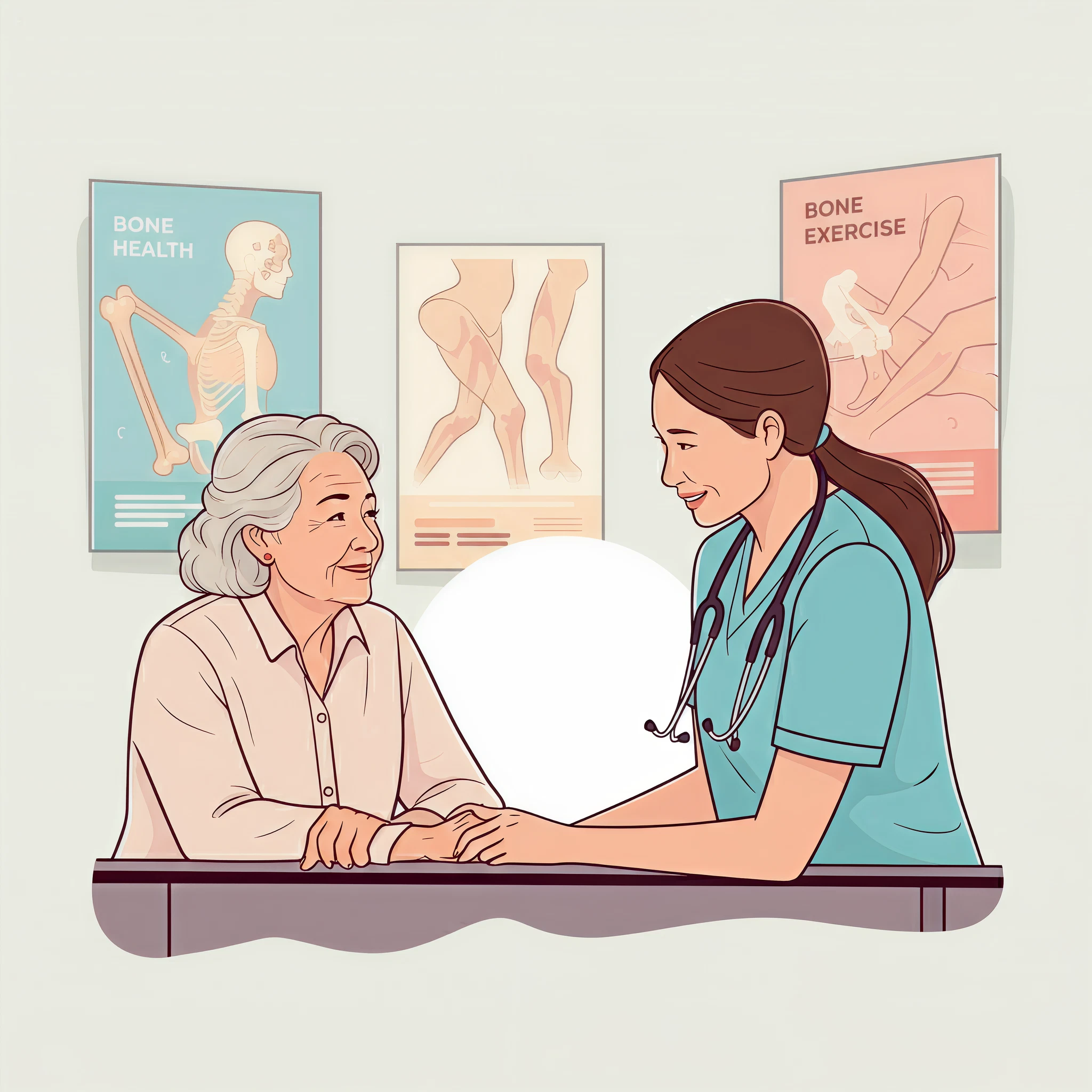Osteoporosis, often referred to as a «silent disease,» weakens bones and significantly increases the risk of fractures. Affecting millions of Americans, it primarily impacts older adults and women, though anyone can be at risk. Because of the high prevalence and potential consequences, understanding the key risk factors of osteoporosis is crucial for prevention and management.
What Is Osteoporosis?
Osteoporosis is a condition characterized by decreased bone density and quality, making bones fragile and more prone to fractures. Often, people are unaware of their condition until a fracture occurs, emphasizing the importance of education and proactive prevention.
Identifying the Risk Factors
Several factors, both lifestyle-related and genetic, influence the likelihood of developing osteoporosis. These include:
1. Age
Bone density naturally decreases with age, especially after the age of 50. The older you are, the higher your risk of developing osteoporosis.
2. Gender
Women are more susceptible to osteoporosis than men due to hormonal changes. Estrogen deficiency, particularly during menopause, accelerates bone loss.
3. Family History and Genetics
If a close family member, such as a parent or sibling, has osteoporosis or has experienced fractures, your genetic predisposition to the condition increases.
4. Bone Mass
Low bone mass (often determined through bone density tests) is an early indicator. Those with lower baseline bone density are at a higher risk.
5. Lifestyle Choices
Smoking and excessive alcohol consumption both negatively impact bone health, as they interfere with the process of bone remodeling.
6. Medical Conditions and Medications
Certain diseases, such as rheumatoid arthritis, and long-term use of medications like corticosteroids (e.g., prednisone) can contribute to bone loss. Note that modifying or addressing these factors with medical guidance can reduce risk.
Why Awareness Matters
Despite the availability of treatments, only about 25% of patients who experience fractures are evaluated for underlying osteoporosis. Without diagnosis and treatment, the likelihood of repeat fractures increases significantly, often leading to prolonged pain and reduced quality of life.
Preventing Osteoporosis
While risk factors like age and gender are beyond control, many others can be addressed to minimize risk. Below are expert-backed steps for prevention:
1. Exercise Regularly
Engage in weight-bearing exercises like walking or jogging to strengthen bones. Balance training exercises can also help reduce fall risks, a leading cause of fractures in older adults.
2. Improve Calcium and Vitamin D Intake
Calcium is essential for maintaining bone mass, with most adults requiring 1,000–1,200 milligrams daily. Vitamin D helps the body absorb calcium effectively, and its levels are equally important. Consult your doctor for personalized supplementation recommendations if your diet lacks these nutrients.
3. Quit Smoking and Limit Alcohol
Smoking weakens bones, and excessive alcohol consumption accelerates bone density loss, particularly in individuals already at risk.
4. Immediate Attention After a Fracture
If you experience a fracture, seek evaluation and treatment for osteoporosis right away. Modern therapies, including medications that build or maintain bone density, can help prevent further fractures.
5. Routine Bone Density Screenings
Health providers utilize advanced bone density tests to assess your fracture risk. For instance, special scans can detect vertebral fractures and reveal early signs of osteoporosis even when no symptoms are present.
Building Stronger Futures
Osteoporosis is preventable and manageable, but it starts with awareness and action. By understanding your risks and taking steps to protect your bones through lifestyle changes and medical support, you can reduce the likelihood of fractures and maintain better skeletal health as you age.
If you’re a healthcare professional, encouraging your at-risk patients to undergo routine bone density screenings and educating them on prevention strategies can make a tremendous difference in improving overall outcomes.
Remember, strong bones are the foundation of a strong and active life. Take charge today and consult your healthcare provider to discuss your risk factors and prevention plan.








